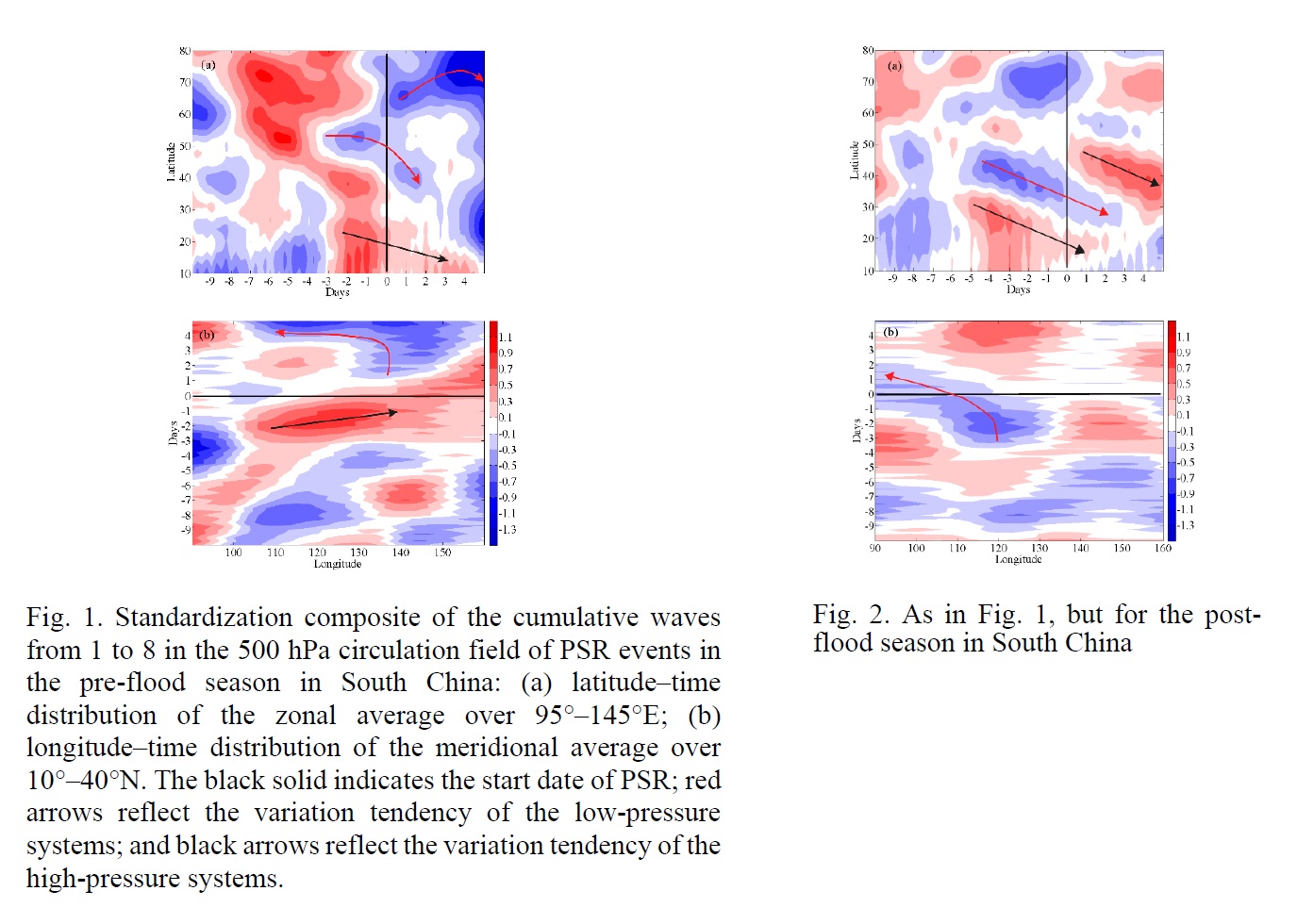Graphical Abstract
Zhao, Y., D. Wang, Z. Liang, and J. Xu, 2017: On the dynamics of the large-scale circulation during the persistent severe rainfall events in southern China. J. Meteor. Soc. Japan, 95, 111-125.
https://doi.org/10.2151/jmsj.2017-006
Graphical Abstract with highlights
Highlights:
- The study shows the dynamic features of the large-scale circulation for persistent severe rainfall (PSR) events during the rainy season (April to July) in southern China. The aim of the study was to understand the formation mechanism and improve forecasting. The circulation field and spatiotemporal distribution of waves at 500 hPa for different types of PSR were analyzed.
- During the pre-flood season (April to June) in southern China, troughs have the same phase in the middle latitudes as those in the high latitudes. The East Asia major trough (3–5 wave numbers) in the middle latitudes strengthens southwards and interacts with the 30°N subtropical high (1–2 wave numbers) from three days prior to the PSR events (Figure 1).
- During the post-flood season (June to July) in South China, the weather regime transitions occur on five days prior to the PSR events. The 40°N trough (2–4 wave numbers) strengthens southwards and interacts with the subtropical high (1–2 wave numbers). It is also affected by the blocking ridge (3 wave number) in the high latitudes (Figure 2).
- During the Mei-yu period (June to July) over the Yangtze–Huaihe River basin, the transitions of circulation pattern start three days prior to the PSR events. With the northwest development of the subtropical high, there is a transfer process from long to short waves in terms of energy for the trough at 50°N.







